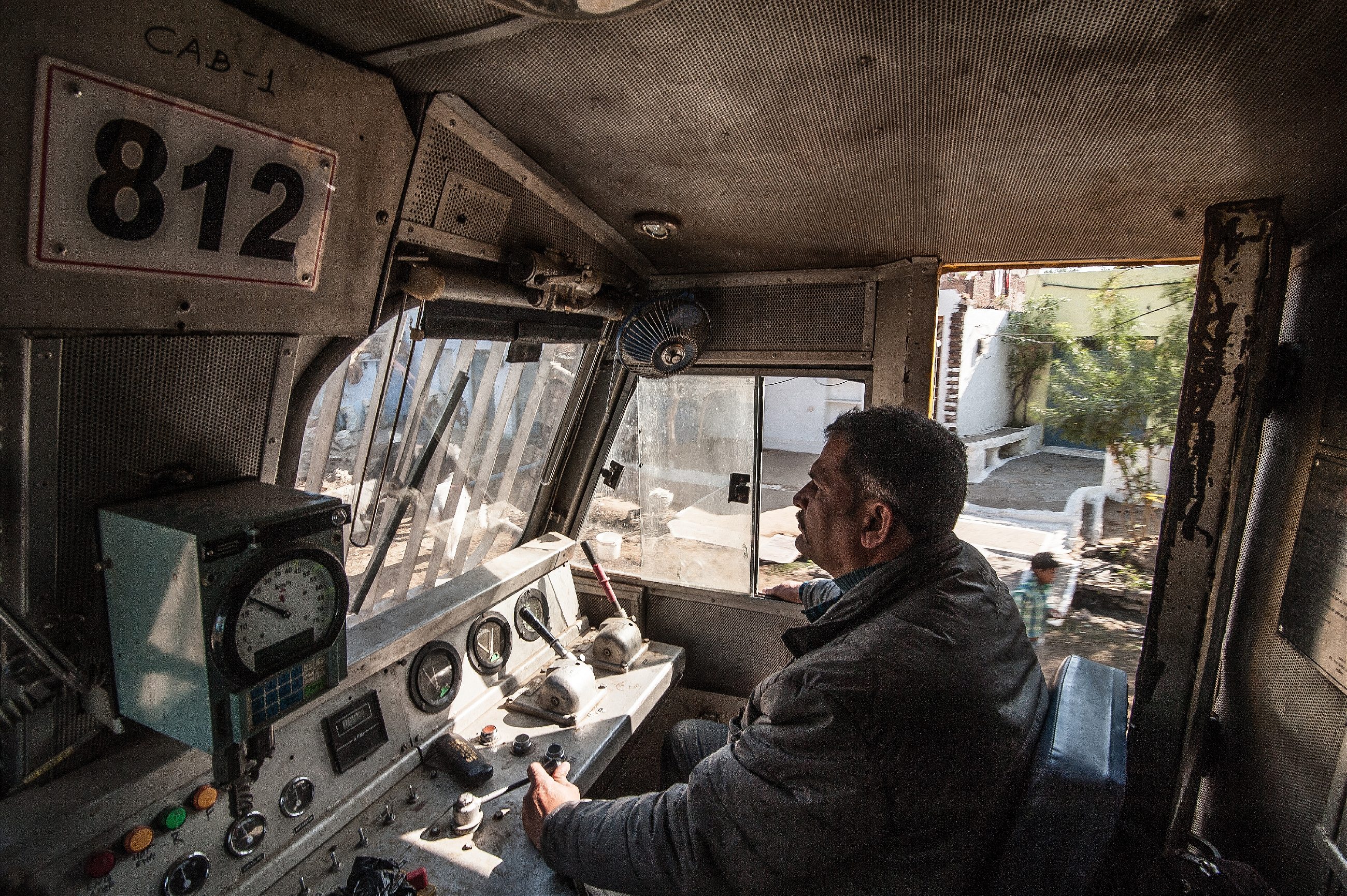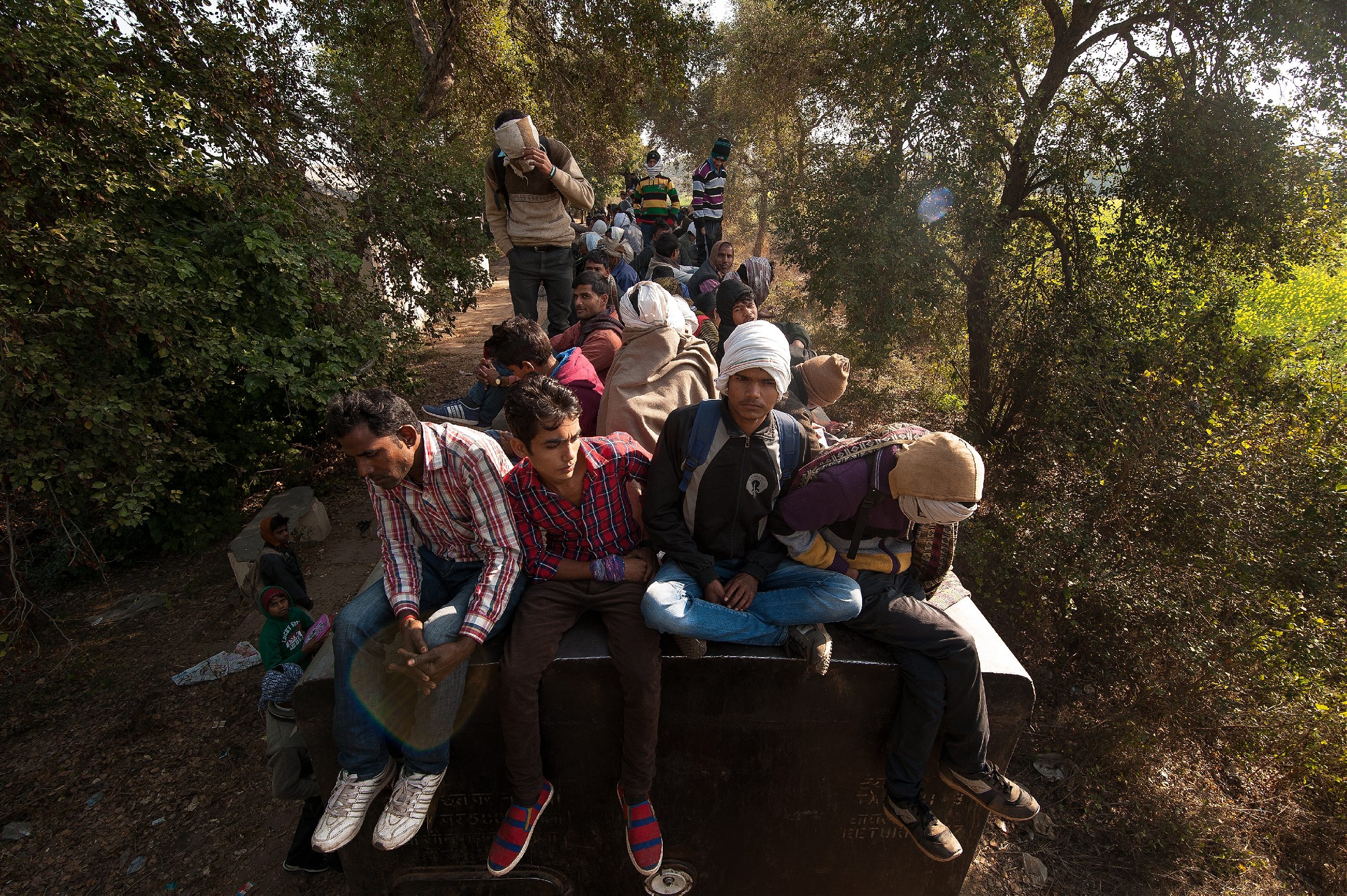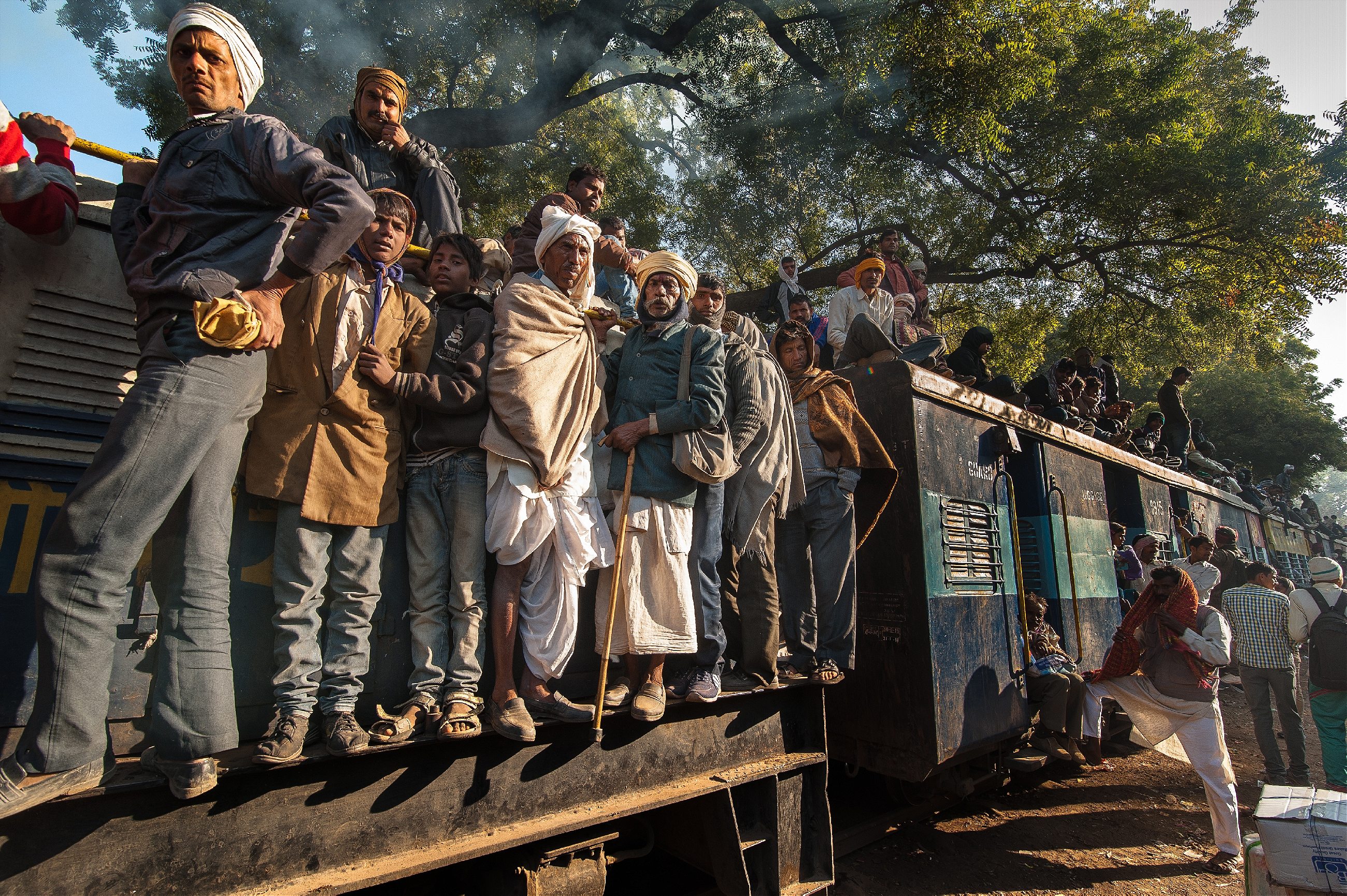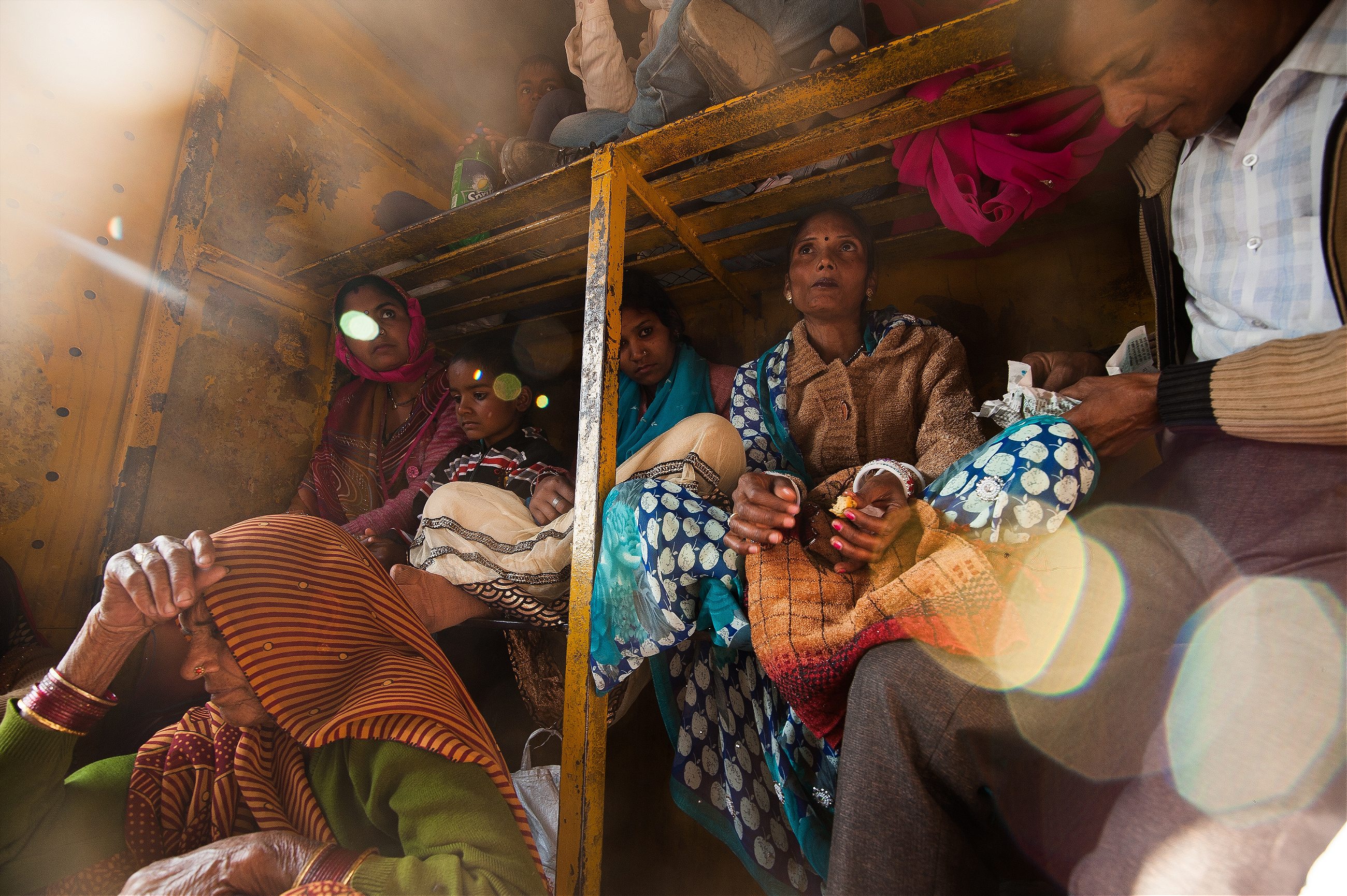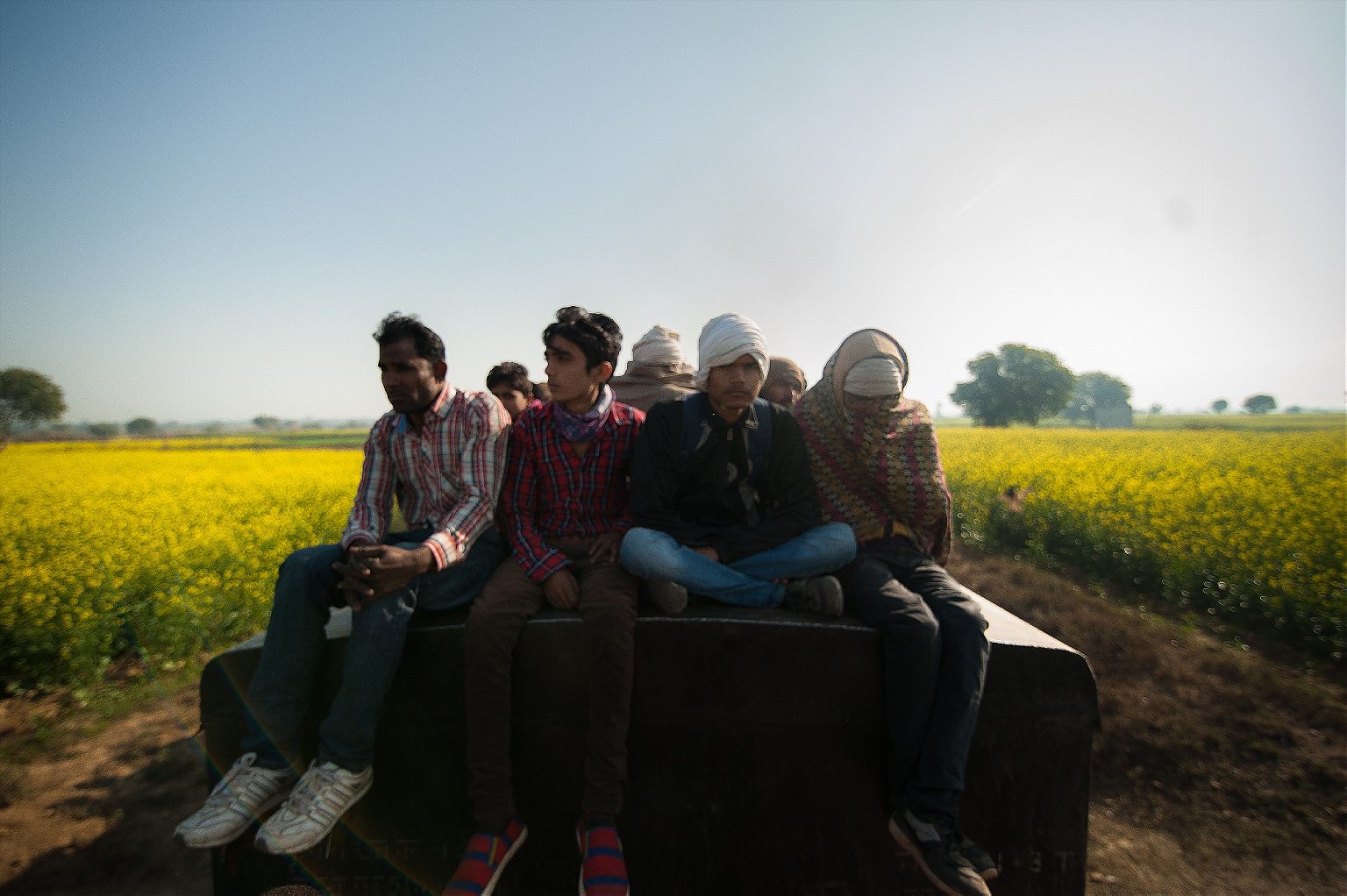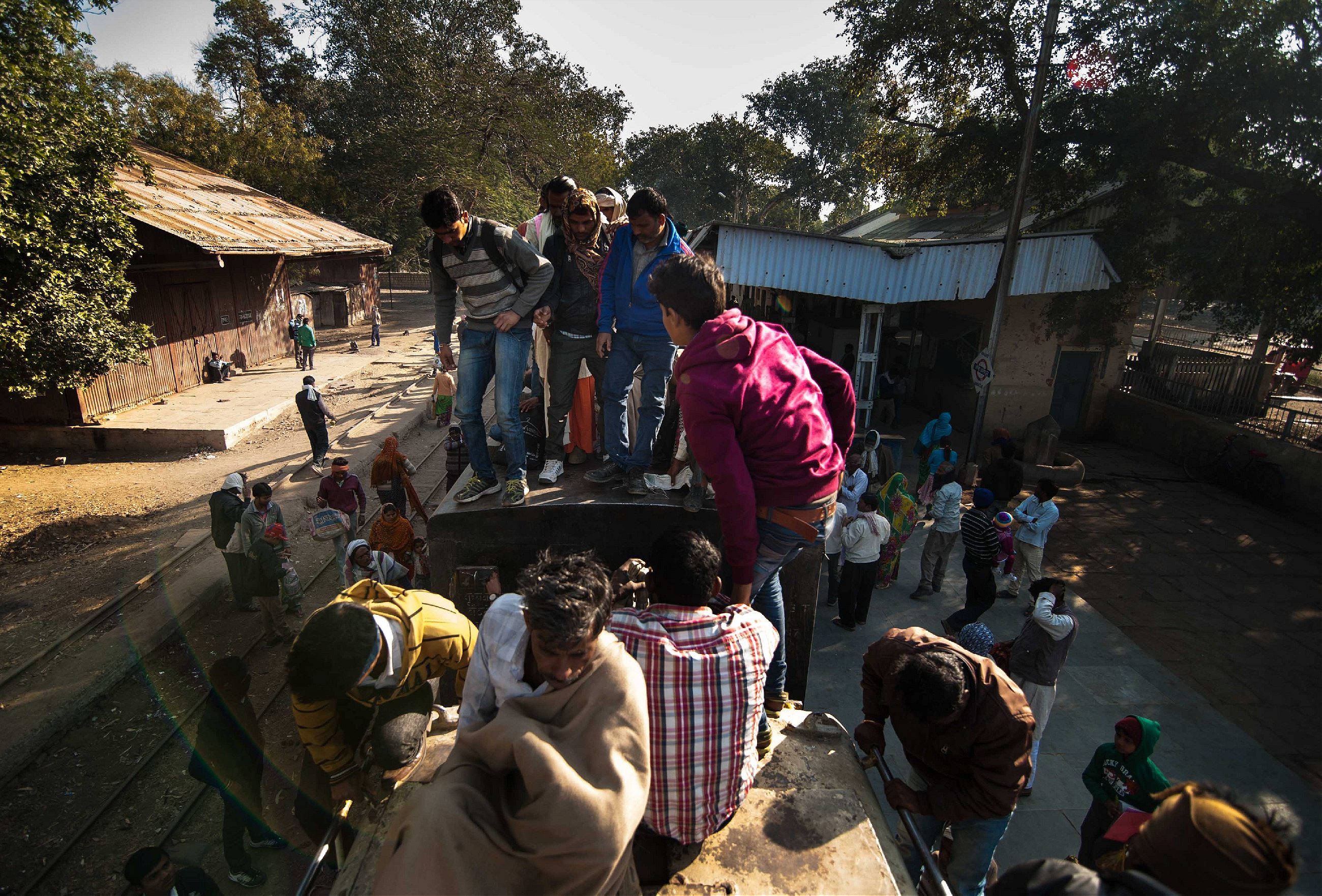Photographer Ritayan Mukherjee documents his journey on the Gwalior Sheopur Kalan Passenger train, which runs on the longest remaining narrow gauge route in the world.
I live in the suburbs of Calcutta and trains are a big part of my life. I take a commuter train every day to reach Howrah station, a very busy terminal where commuters like me jostle with travelers from all parts of the country to make their way across the iconic bridge and into the city. Each day, as I wind my way through the crowd, I hear announcements for different trains: the fast and slow passenger trains to nearby destinations, the Superfast Expresses that traverse the length and breadth of India, the Express trains that make way for them, the swanky Shatabdis and Rajdhanis that can speed up to 150 kilometers an hour. There is a whole class system, a hierarchy, to these trains.
And then there are trains that don’t even make it to the bottom rung. The one‐off passenger trains that operate on the main network’s little branches. Maybe the terrain they cross is difficult, or the route less traveled, or maybe the railway system has just forgotten about them. The tracks on these routes haven’t been updated to broad gauge like the rest of the network. They still run on rails that are a meter apart (meter gauge) or just two feet apart (narrow gauge). Some time ago I had the opportunity to travel on a narrow gauge route from Katwa to Balgona in my home state of West Bengal. I was struck by how different the experience was from my regular commute.
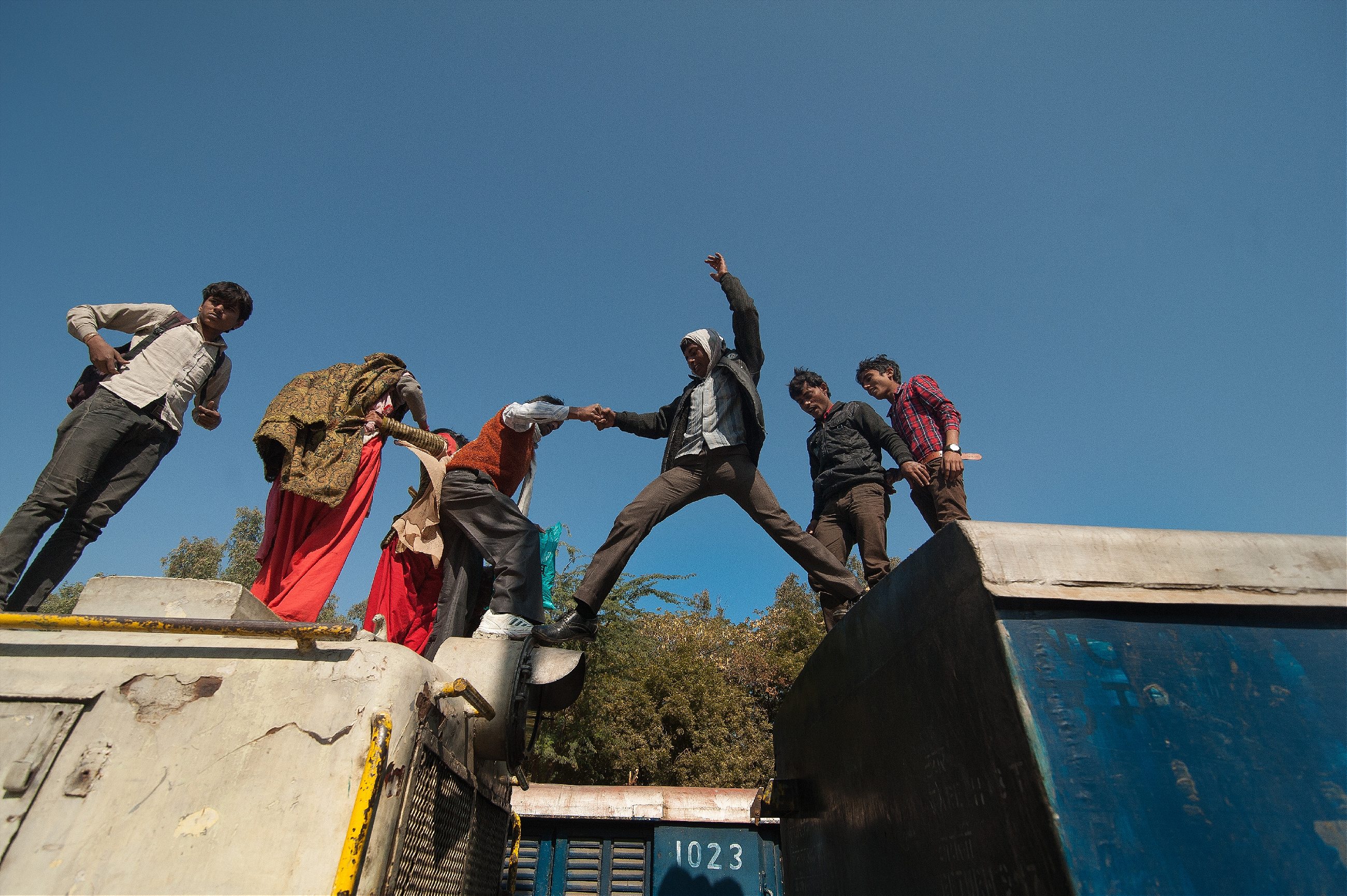
My daily train can get crowded, but it arrives quickly and the stops last 30 seconds each. The urgent hum of the electric engine fuses with my thoughts of the day ahead. I look out the window but I don’t really look at anything. In contrast to this energetic, almost restless travel, trains on a narrow gauge line can only go up to 35 kilometers an hour. This speed was revolutionary in the early twentieth century. Today, almost everything on the road can outrun it.
The Katwa experience stayed with me and I started researching similar routes. I found out about the Gwalior Sheopur Kalan Passenger train, which runs on the longest remaining narrow gauge route in the world. The train takes more than 10 hours to cover 198km (123 miles). It is so behind its time that the Indian government tried to get it on the UNESCO World Heritage List. Sadly, it didn’t make the cut.
Another thing that caught my imagination about the train was that it travels through the Chambal region of Central India, infamous for being a lawless and harsh landscape dotted with bandits, like the Wild West of India. It brought back memories of Bollywood-Spaghetti Western movies from the 80s and 90s. I knew I had to take it.
On a long weekend in January, I flew to Delhi and then drove south to Gwalior. I got to the train station of the historic city at 5:30am for a 6:25am train. I was advised to get there early if I wanted a seat, but I wasn’t early enough: the seven coaches, which have a capacity of 150‐200 passengers, were already full. Travelers helped me on board and made some room for me. The train didn’t have much by the way of amenities: hard wooden seats and no fans, lights, or toilets.

From Gwalior, the next stop was Ghosipura where another trainload of people were waiting to board. I wondered how everyone would fit. They went up to the roof, hung on to the sides of the train, and of course, wedged themselves inside the coaches to the point where it was difficult to breath. I made my way up to the cabin of the driver, Anwar Khan, who let me ride with him for a bit.
He shared his snack of puffed rice with me as he told me about his daily drill. He drives the train for six hours and then takes a mandatory 16‐hour break while another driver takes over. Later, he helped me climb up to the carriage roof.
Though it was exciting to be on top, it was just as crowded as the coach below. Passengers accommodated me and told me to watch out for branches. At Birpur station several passengers dismounted and made their way to the coaches. They knew the train was about to cross the Kuno River on a truss bridge that has a low clearance. The braver passengers stayed on the roof, laying flat on their backs to avoid getting hit by the crossbeams.
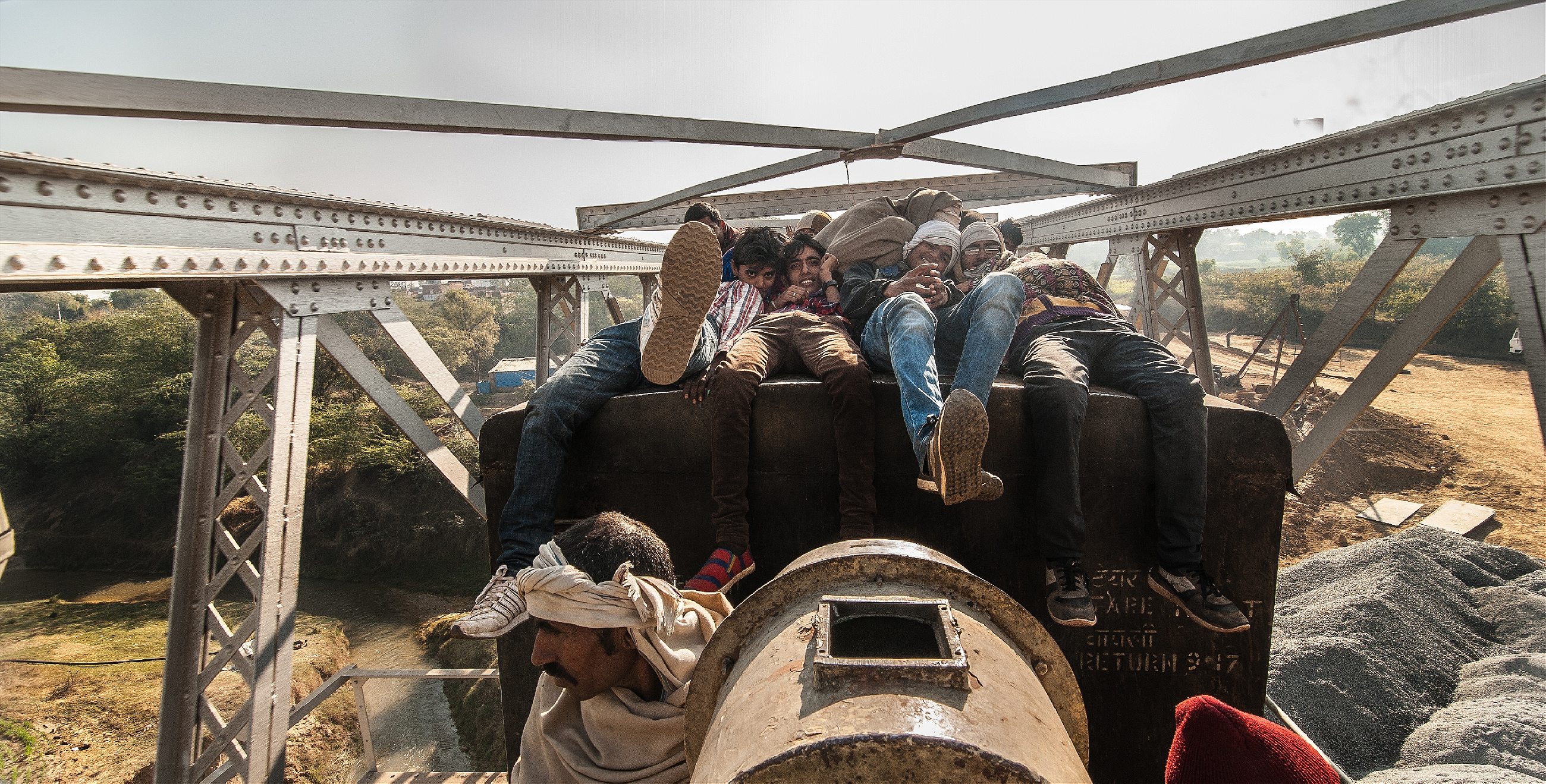
The day was measured by the rhythmic beat of the train as it trudged on. The people I met had a kind of resigned forbearance about them: the pace was slow but there was no point fretting about it. They tried to make each other as comfortable as possible and got out at stations frequently to stretch themselves. Many told me that their villages weren’t well connected by roads. And where roads existed, taking the bus was expensive. They also told me about plans to upgrade the route to broad gauge, which would cut travel time.
I couldn’t help but think that when that day arrives, something of this accommodating warmth will be lost. I had never been so comfortably uncomfortable in a press of people. I consoled myself thinking that the upgrade will take some time. Until then, the Gwalior Sheopur Kalan chugs on, between nostalgia and oblivion.
